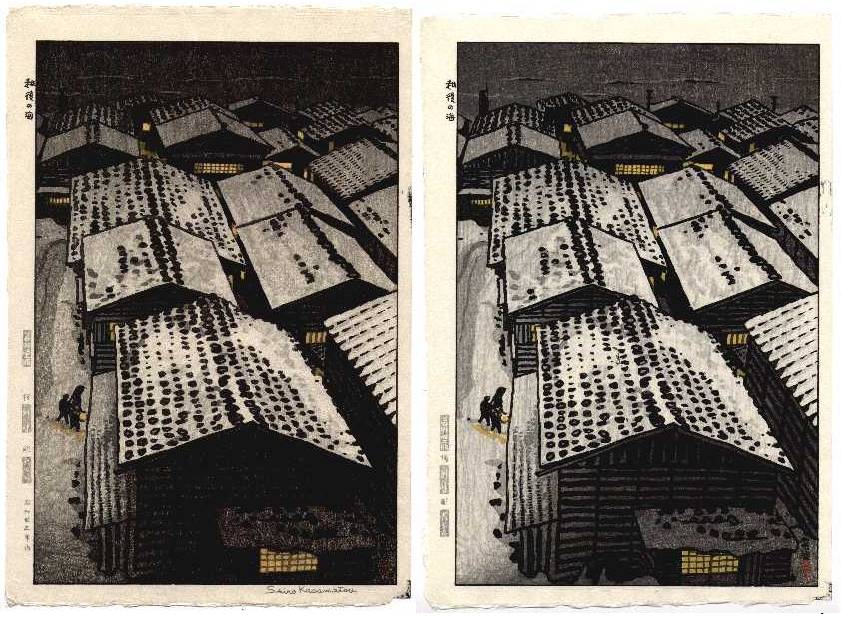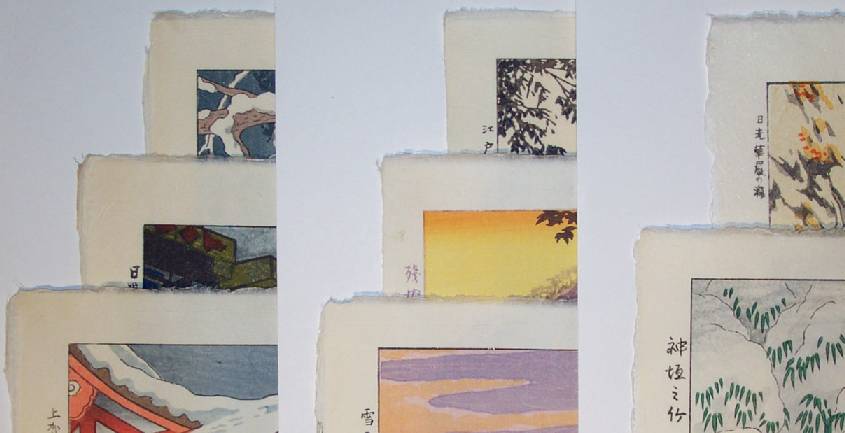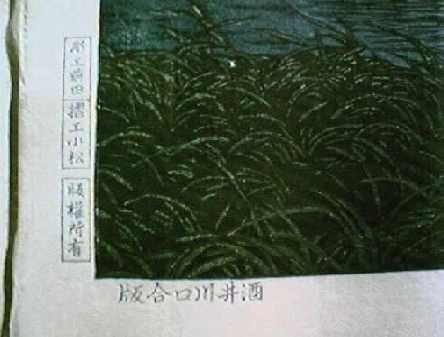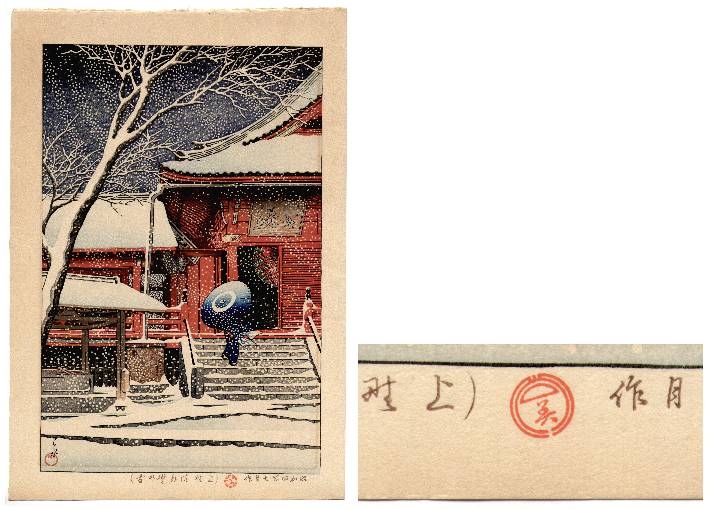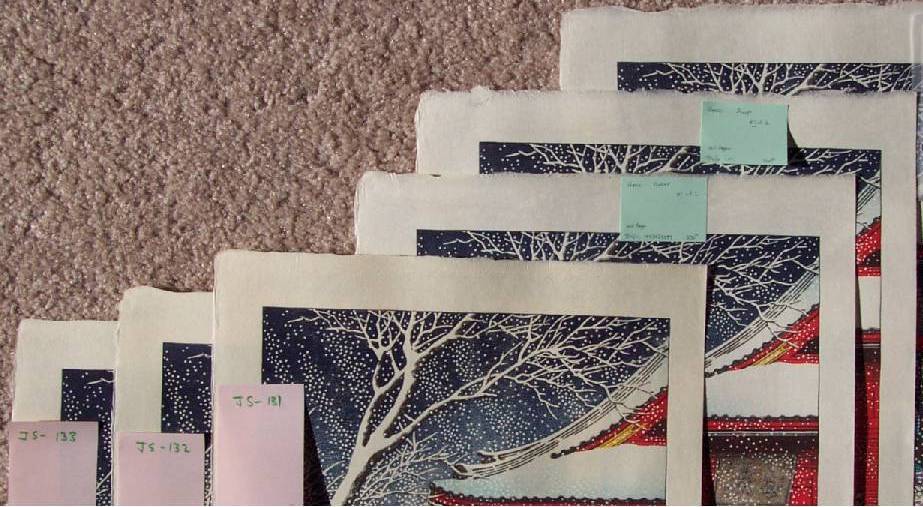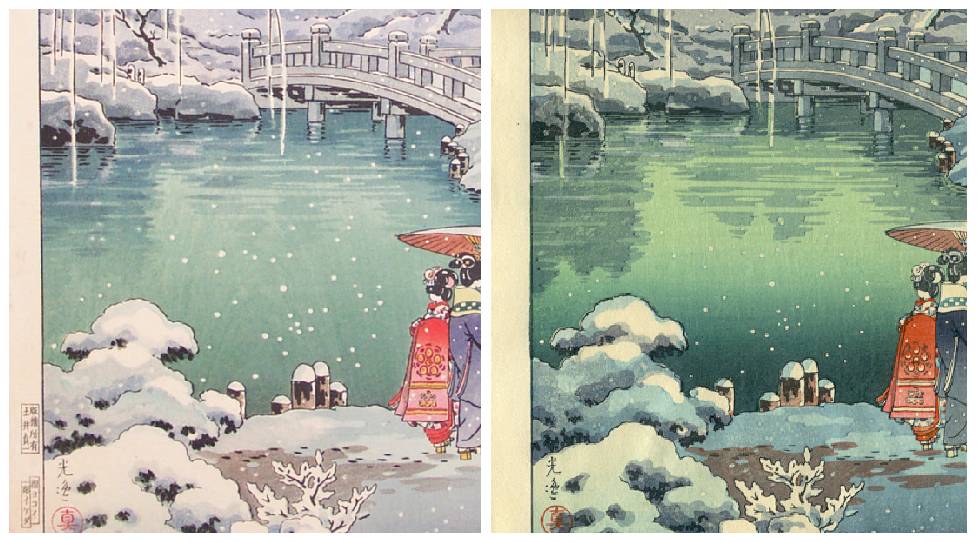
"detail area" of Koitsu's 1936 print, "Spring Snow at Maruyama, Kyoto"
Left: Ukiyoe Gallery's Item #JS-1253 (pre-war) versus Right: Recent eBay Auction (post-war?)
(note distinctly visible "woodgrain" pattern) (note total absence of any "woodgrain" pattern)
